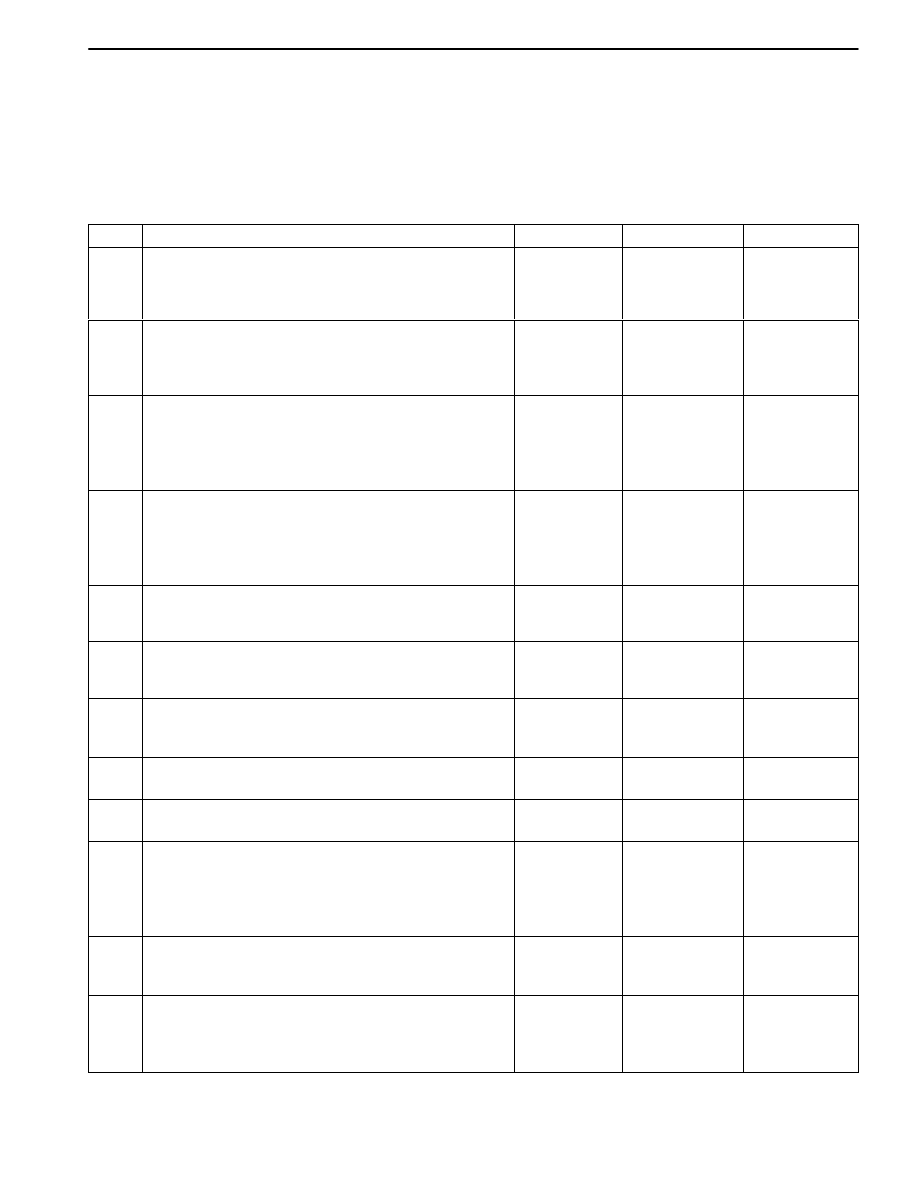Daewoo Matiz (2003 year). Manual - part 94

1F – 286 ENGINE CONTROLS
SURGES OR CHUGGLES
Definition: Engine power variation under steady throttle
or cruise. Feels like the vehicle speeds up and slows
down with no change in the accelerator pedal position.
Important: Make sure the driver understands A/C com-
pressor operation as described in the owner’s manual.
The speedometer reading and the speed reading on the
scan tool should be equal.
Before diagnosing the symptom, check service bulletins
for updates.
Step
Action
Value(s)
Yes
No
1
Were the Important Preliminary Checks performed?
–
Go to Step 2
Go to
“Important
Preliminary
Checks”
2
Connect the scan tool to the Data Link Connector
(DLC).
Does the oxygen sensor (O2S) respond quickly to
different throttle positions?
–
Go to Step 4
Go to Step 3
3
1. Check the O2S for silicone or other contaminants
from fuel or use of improper Room Temperature
Vulcanizing (RTV) sealant.
2. Replace the contaminated O2S.
Is the repair complete?
–
System OK
–
4
1. Drive the vehicle at the speed of the complaint.
2. Monitor the long term fuel trim reading using the
scan tool.
Is the long term fuel trim reading within the value
specified?
–20–25%
Go to Step 7
Go to Step 5
5
Is the long term fuel trim reading below the value
specified?
–20%
Go to
“Diagnostic Aids
for DTC P0172”
Go to Step 6
6
Is the long term fuel trim reading above the value
specified?
25%
Go to
“Diagnostic Aids
for DTC P0171”
–
7
Check the fuel system pressure while the condition
exists.
Is the fuel system pressure within specifications?
380 kPa
(55 psi)
Go to Step 8
Go to Step 17
8
Check the in-line fuel filter.
Is the filter dirty or plugged?
–
Go to Step 18
Go to Step 9
9
Perform an injector diagnosis.
Did the injector diagnosis pinpoint the problem?
–
Go to Step 19
Go to Step 10
10
1. Check for proper ignition voltage output using a
spark tester.
2. Inspect the spark plugs for cracks, wear, improper
gap, burned electrodes, or heavy deposits.
Is the problem found?
–
Go to Step 11
Go to Step 12
11
Repair or replace any ignition system components
as needed.
Is the repair complete?
–
System OK
–
12
1. Inspect the ECM grounds for being clean, tight,
and in their proper locations.
2. Inspect the vacuum lines for kinks or leaks.
Is the problem found?
–
Go to Step 13
Go to Step 14